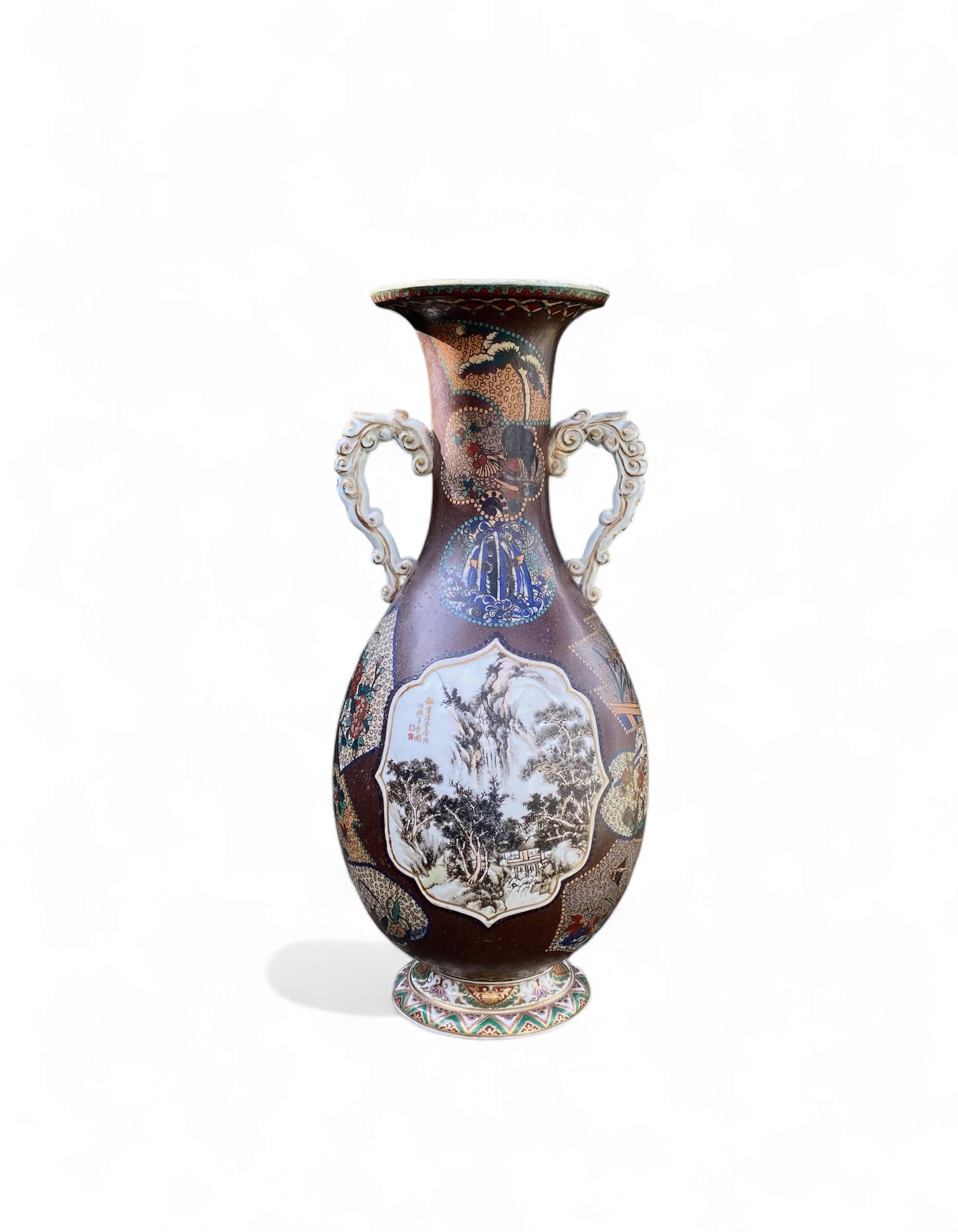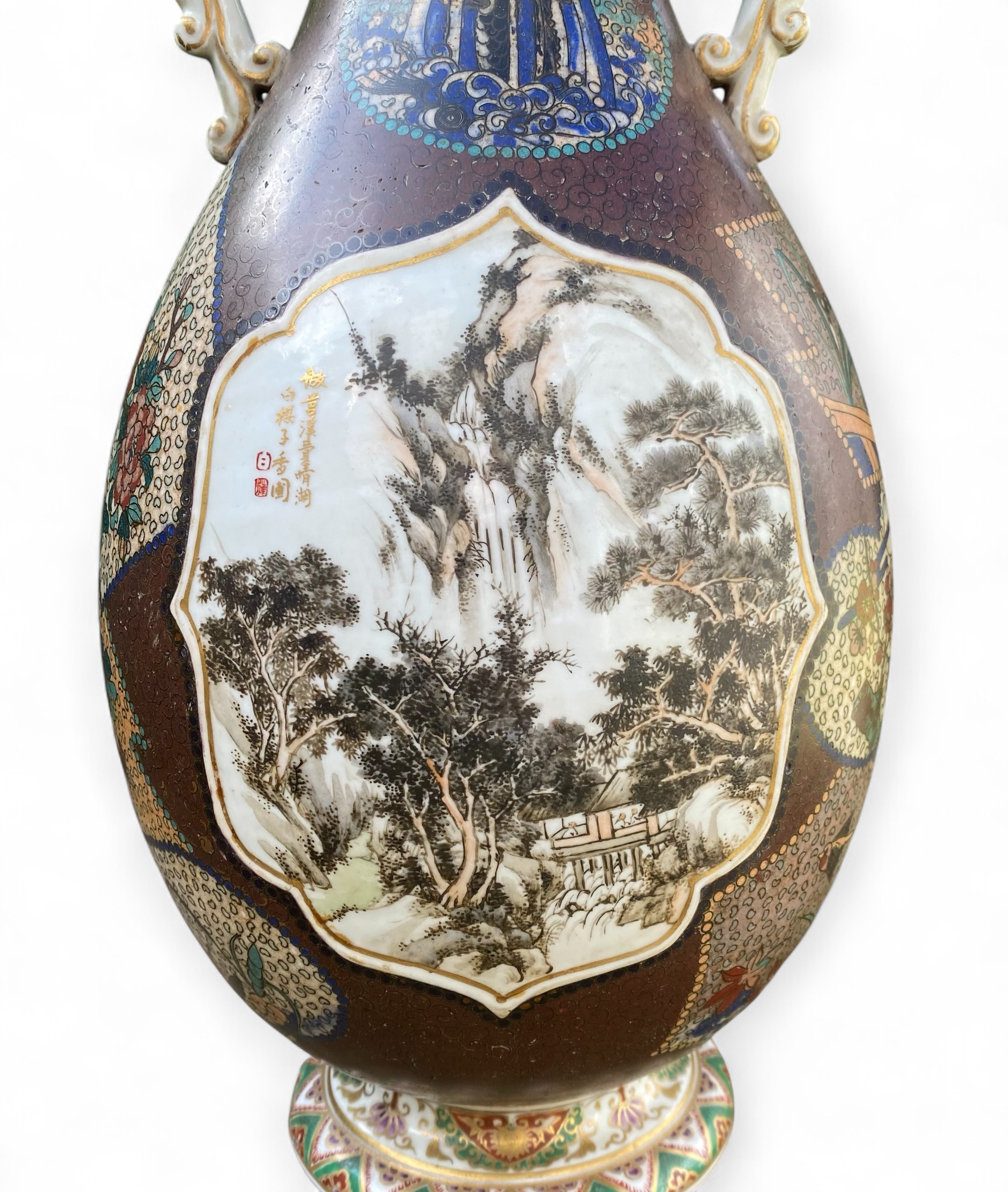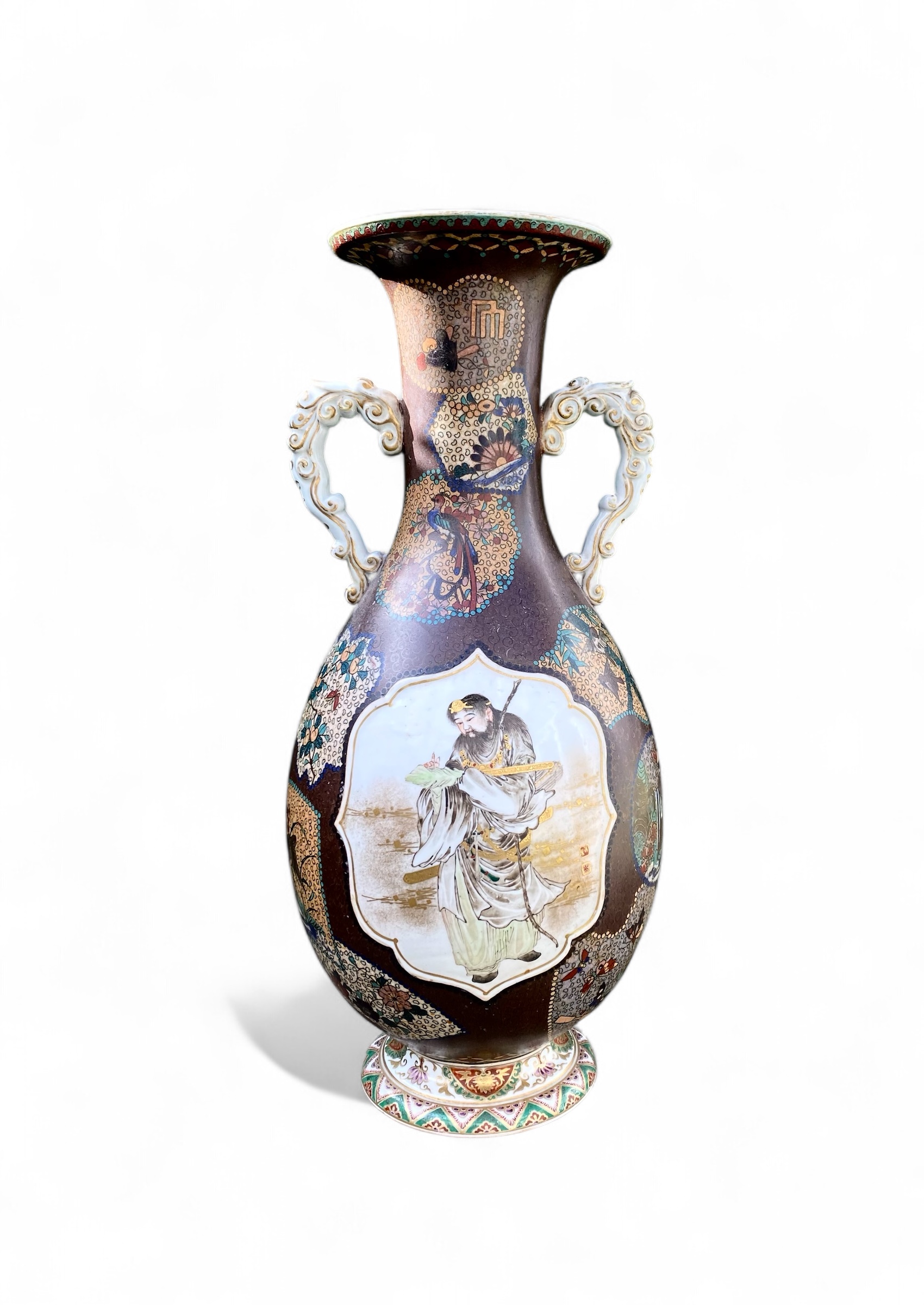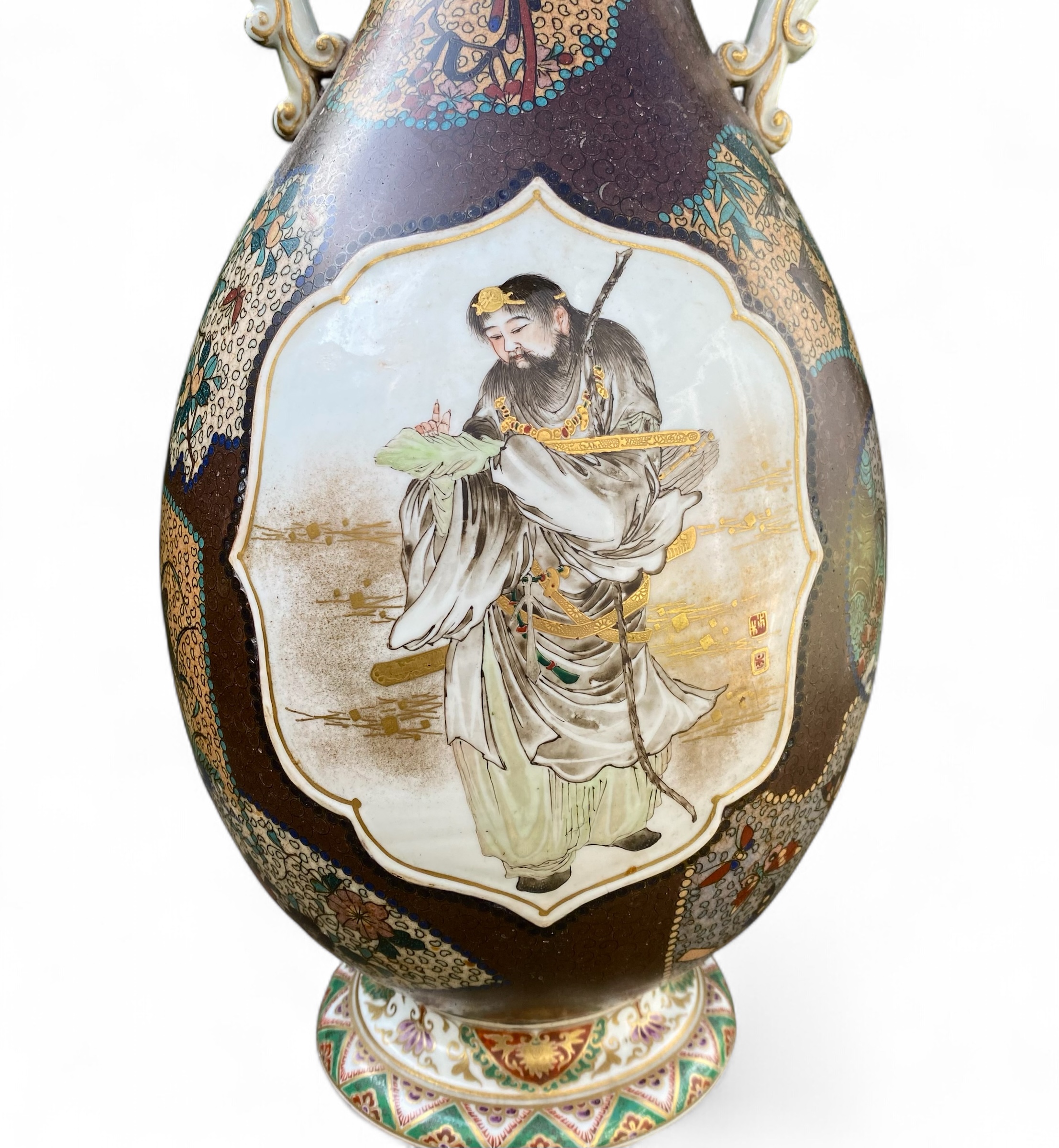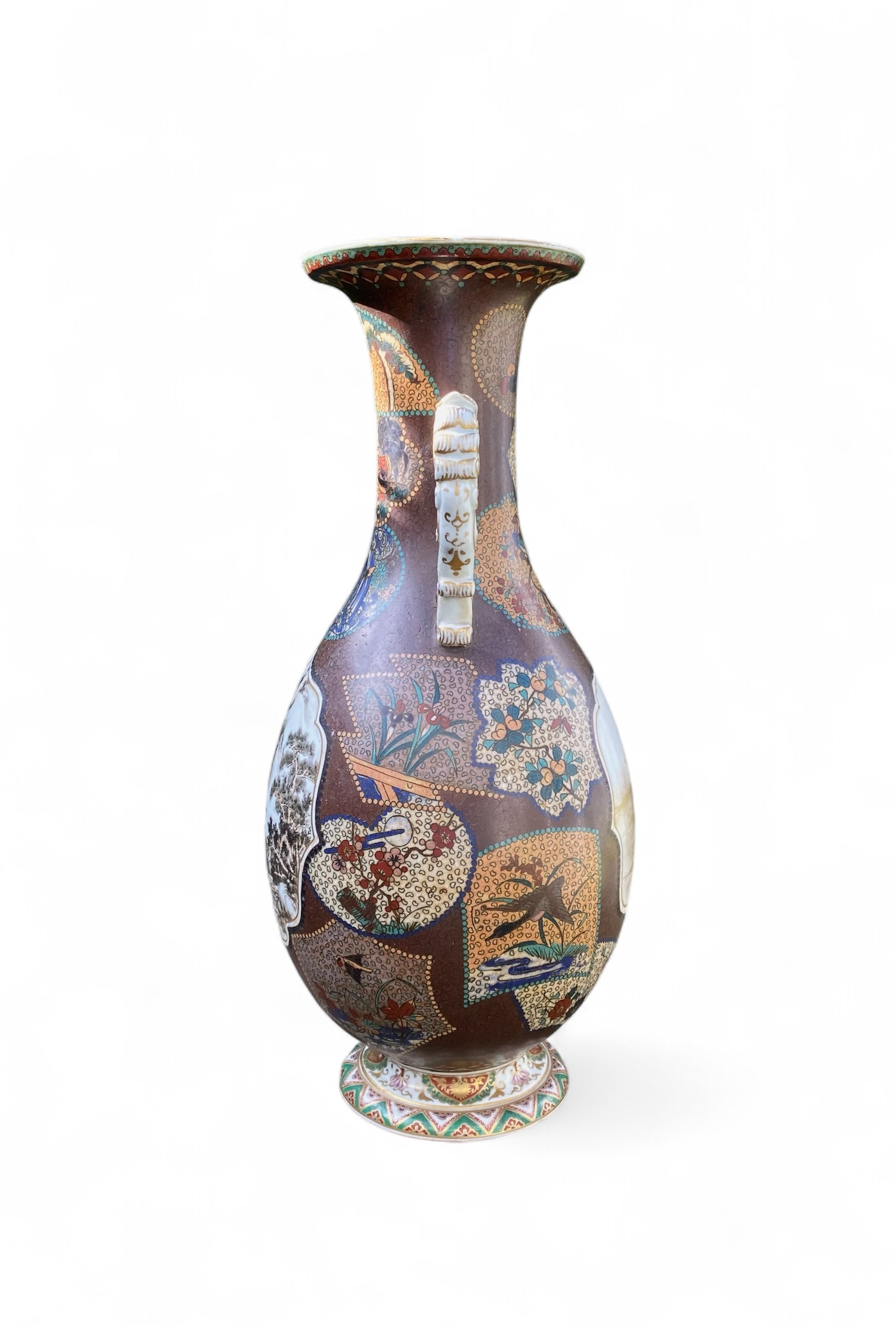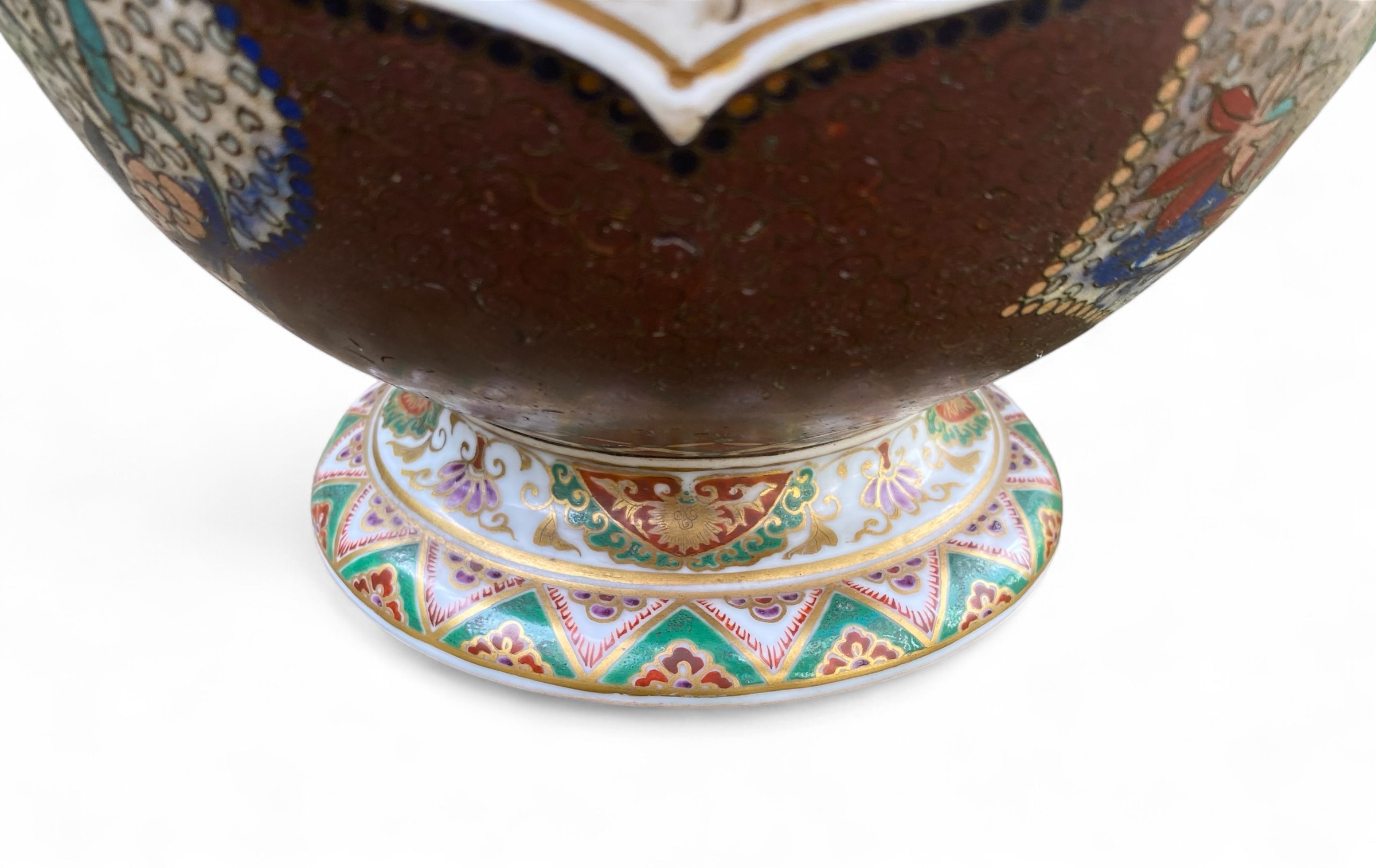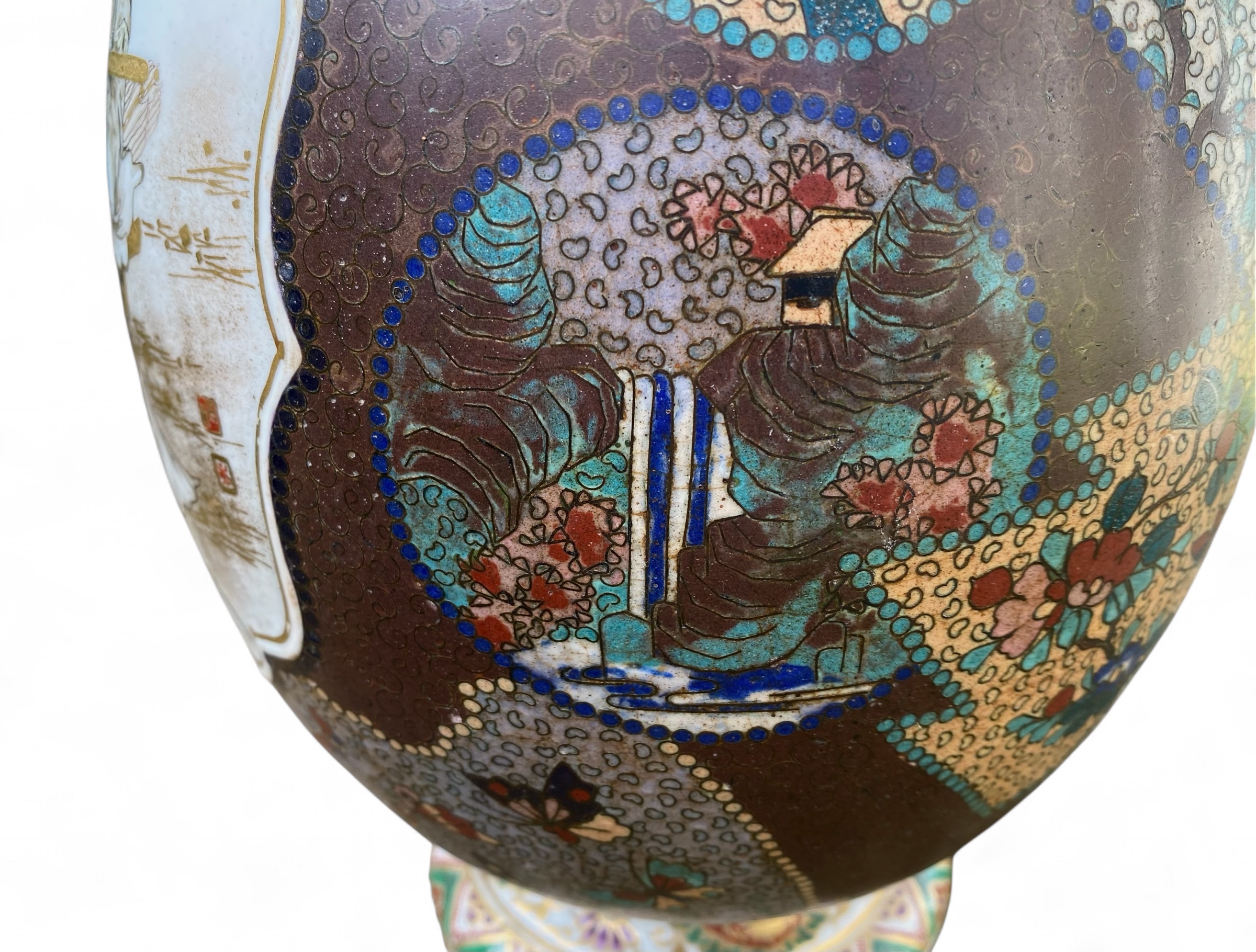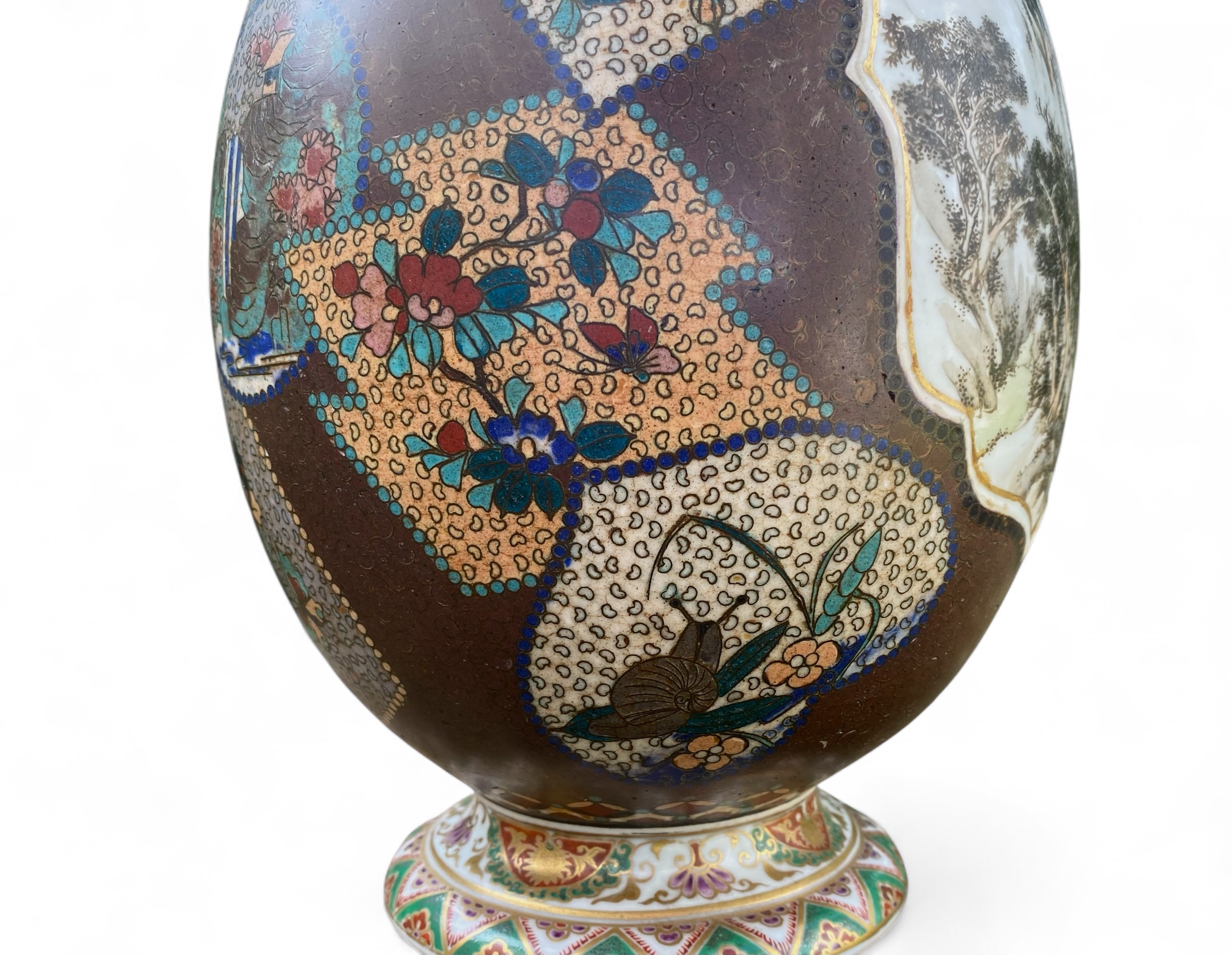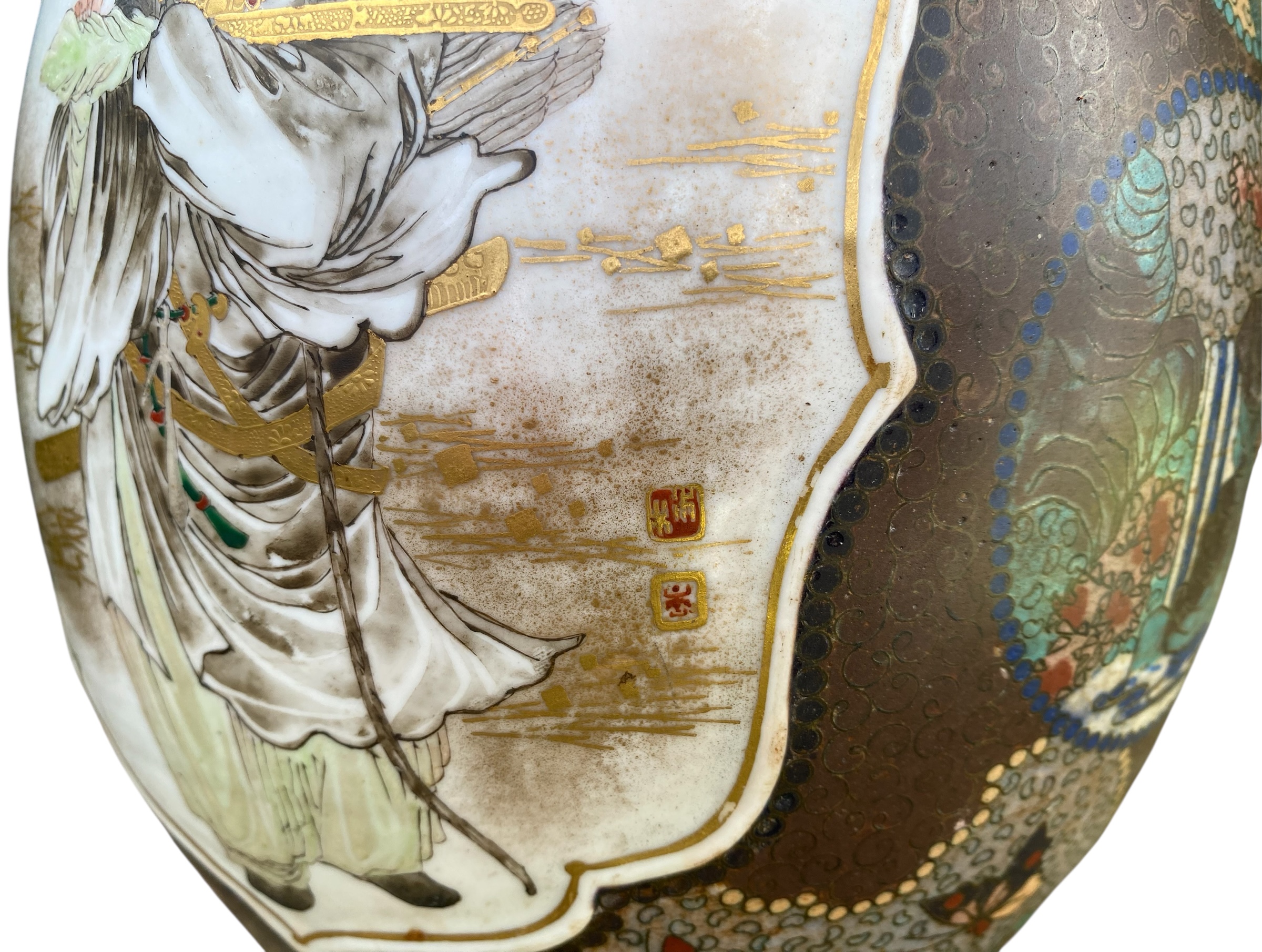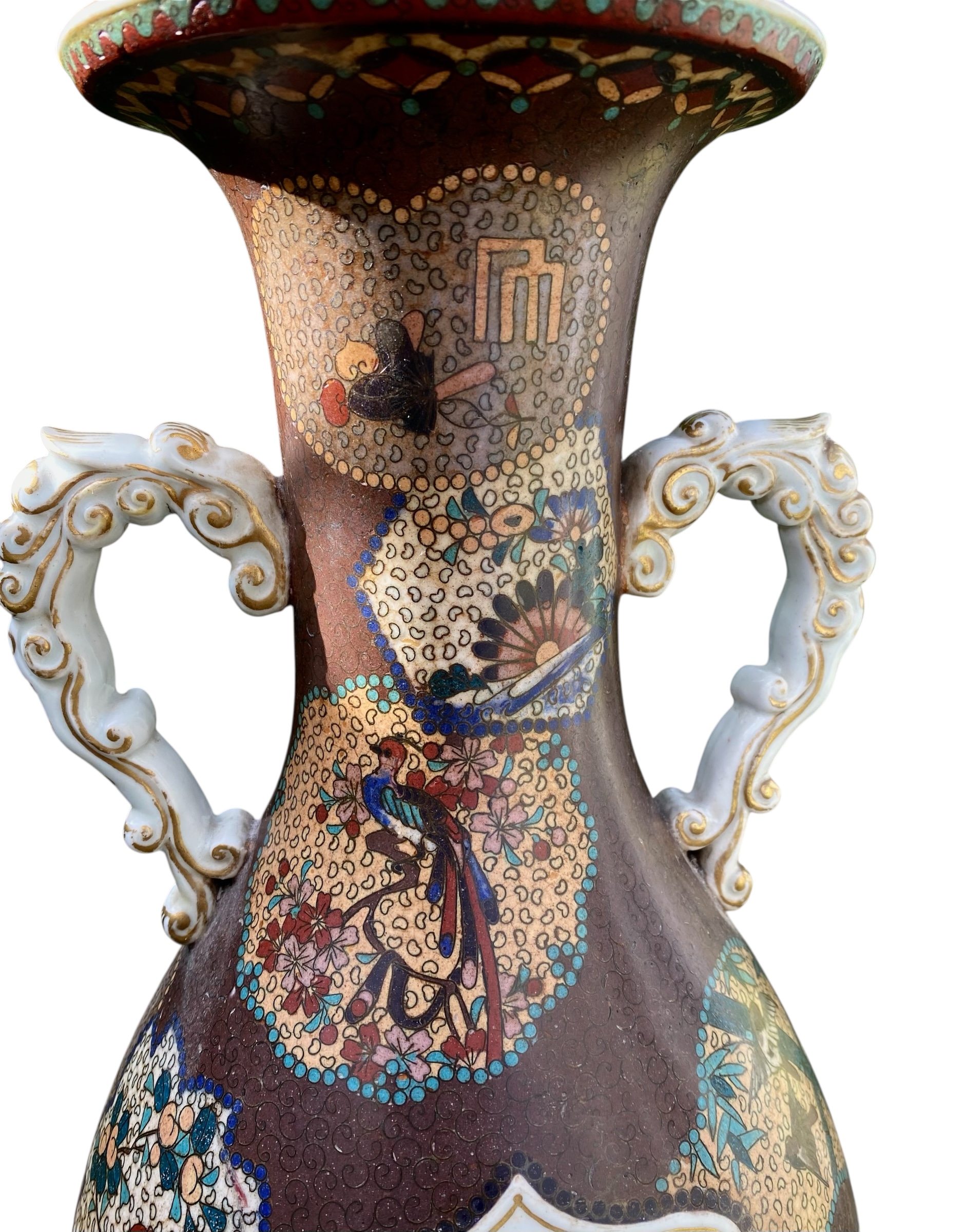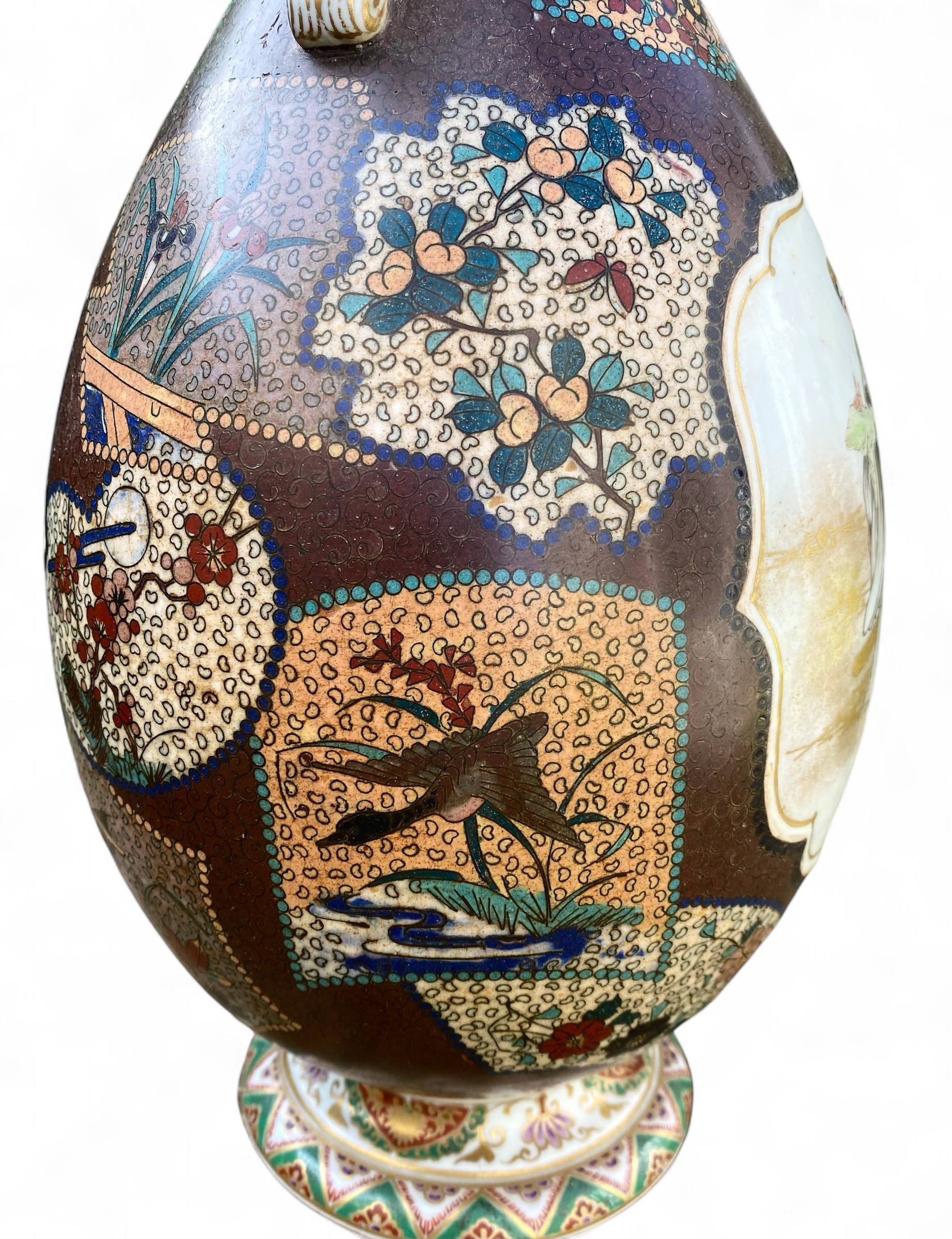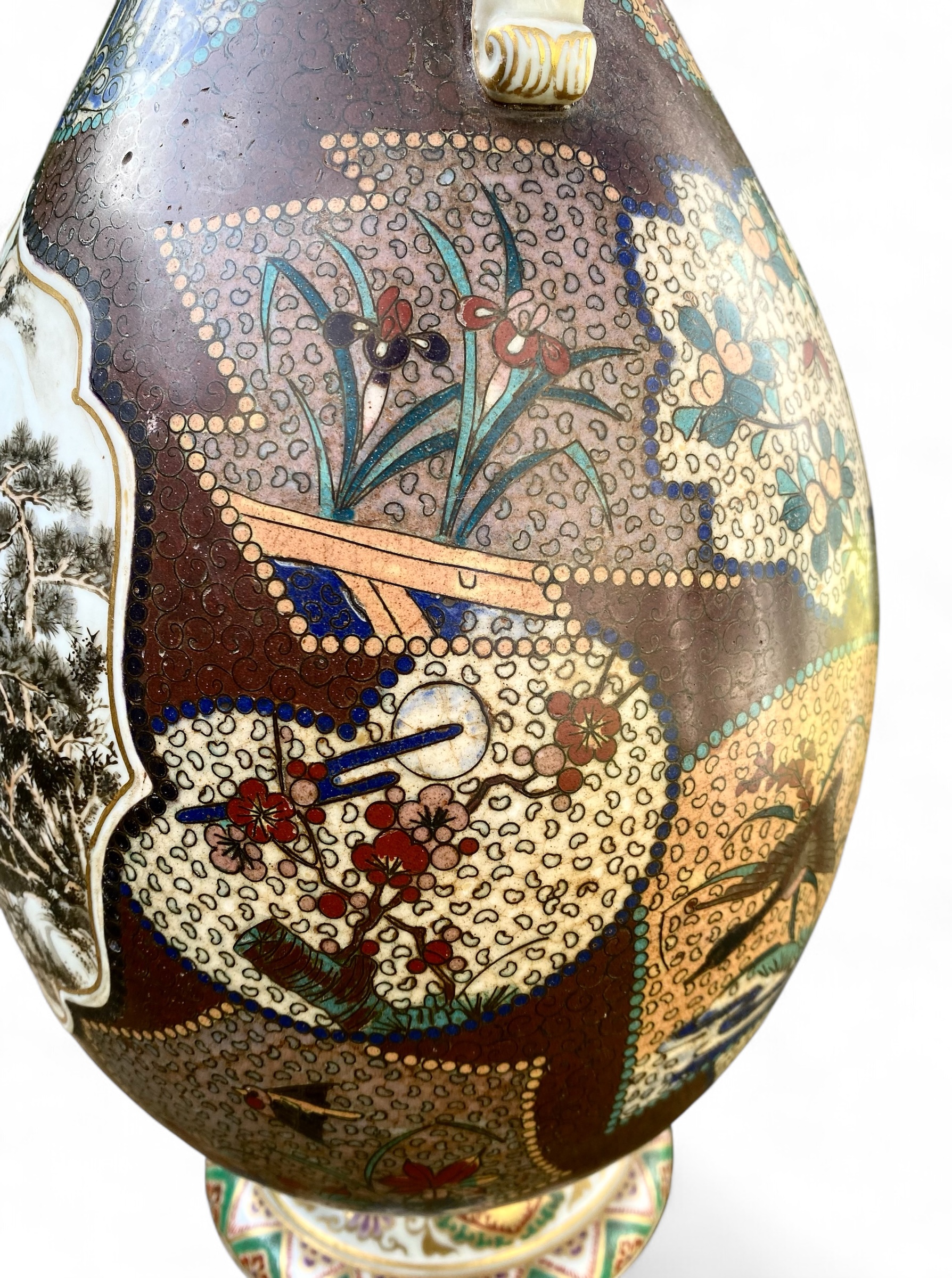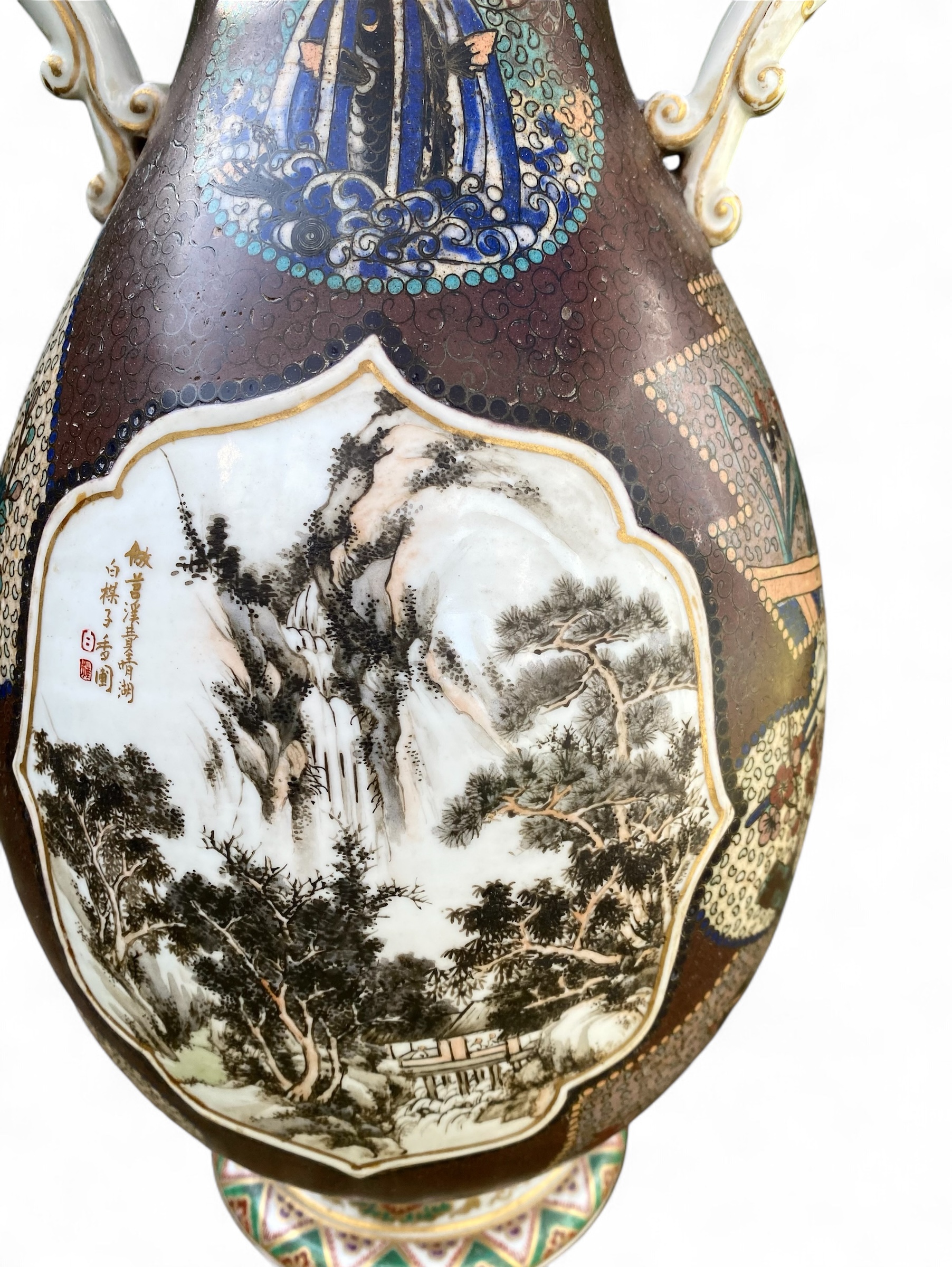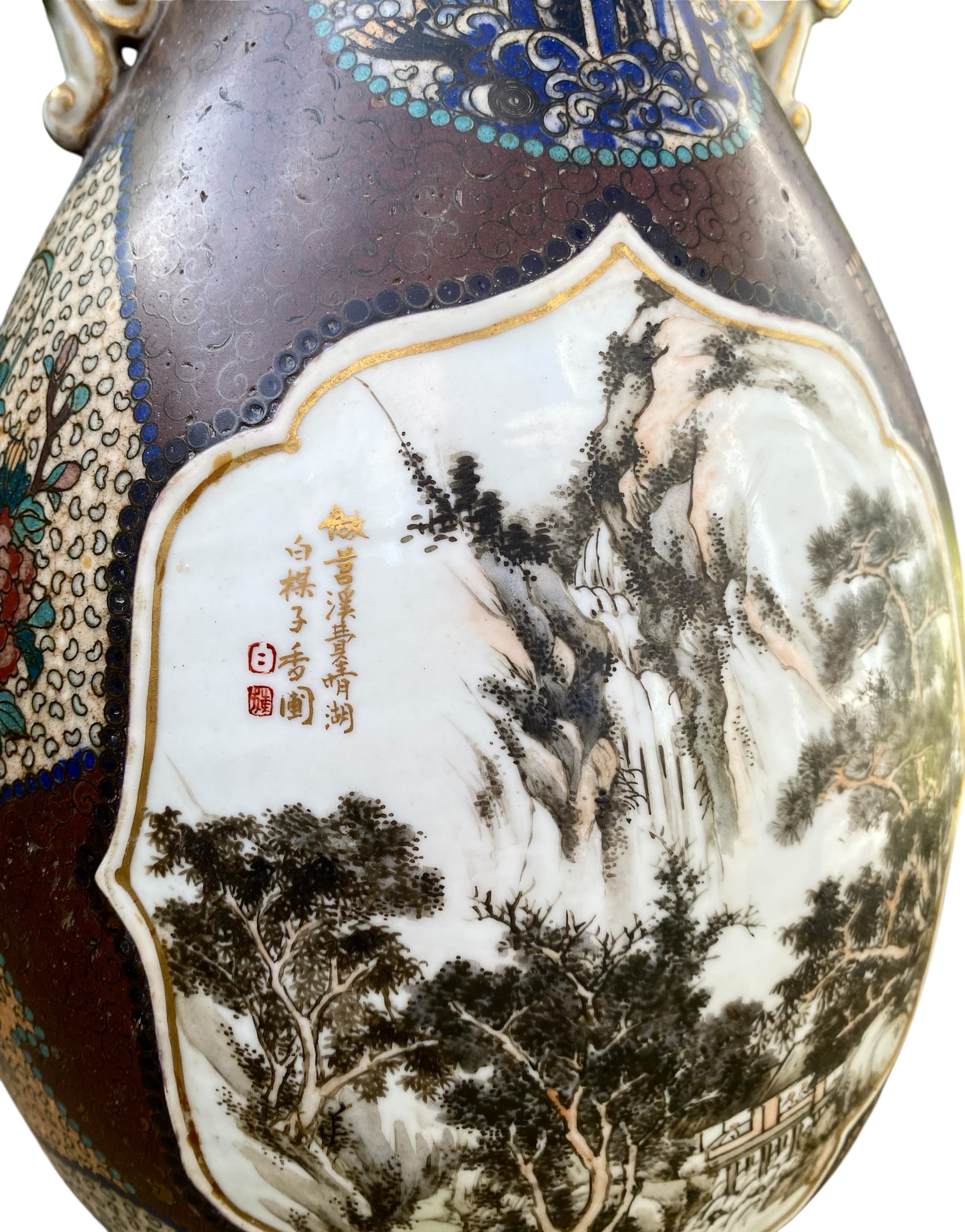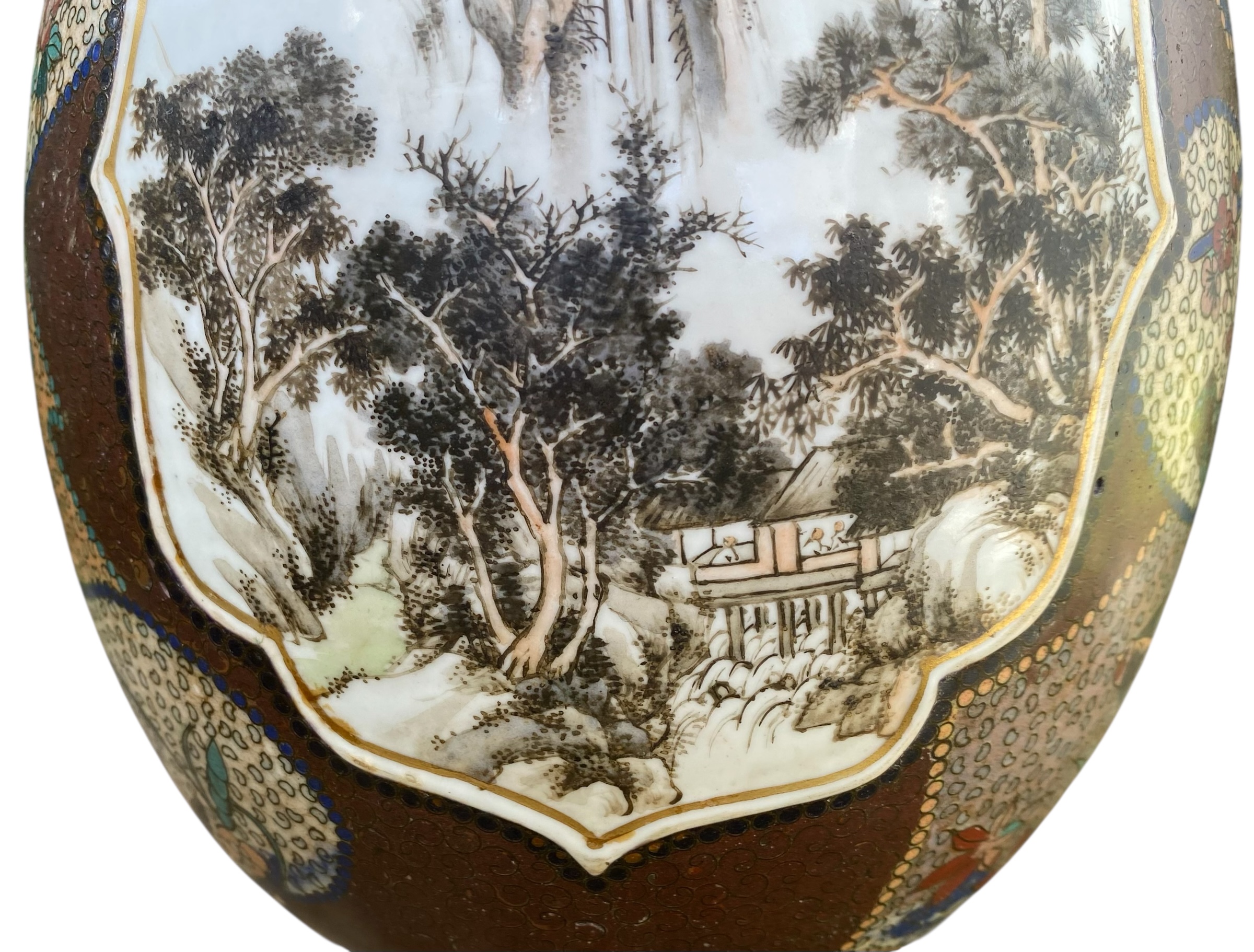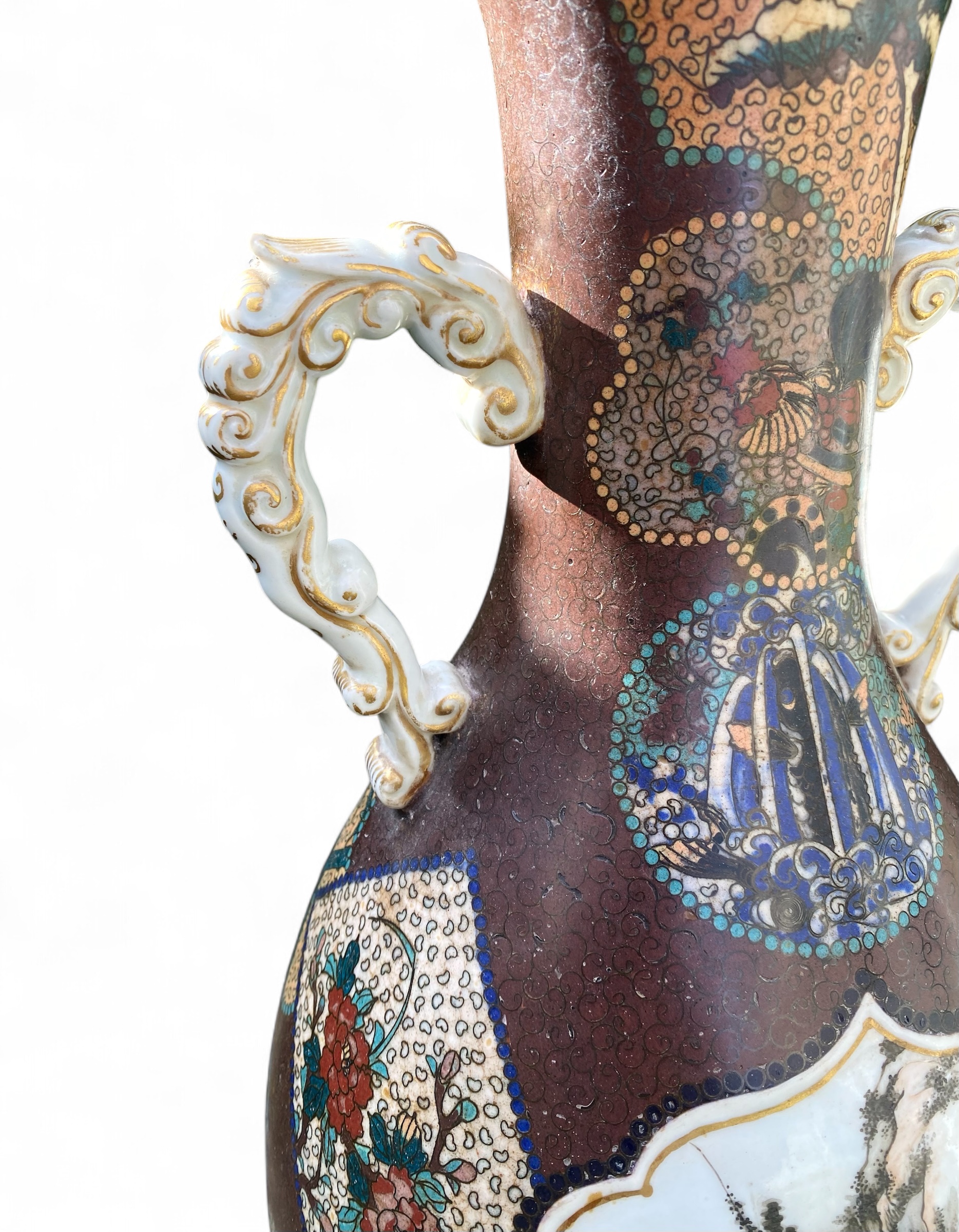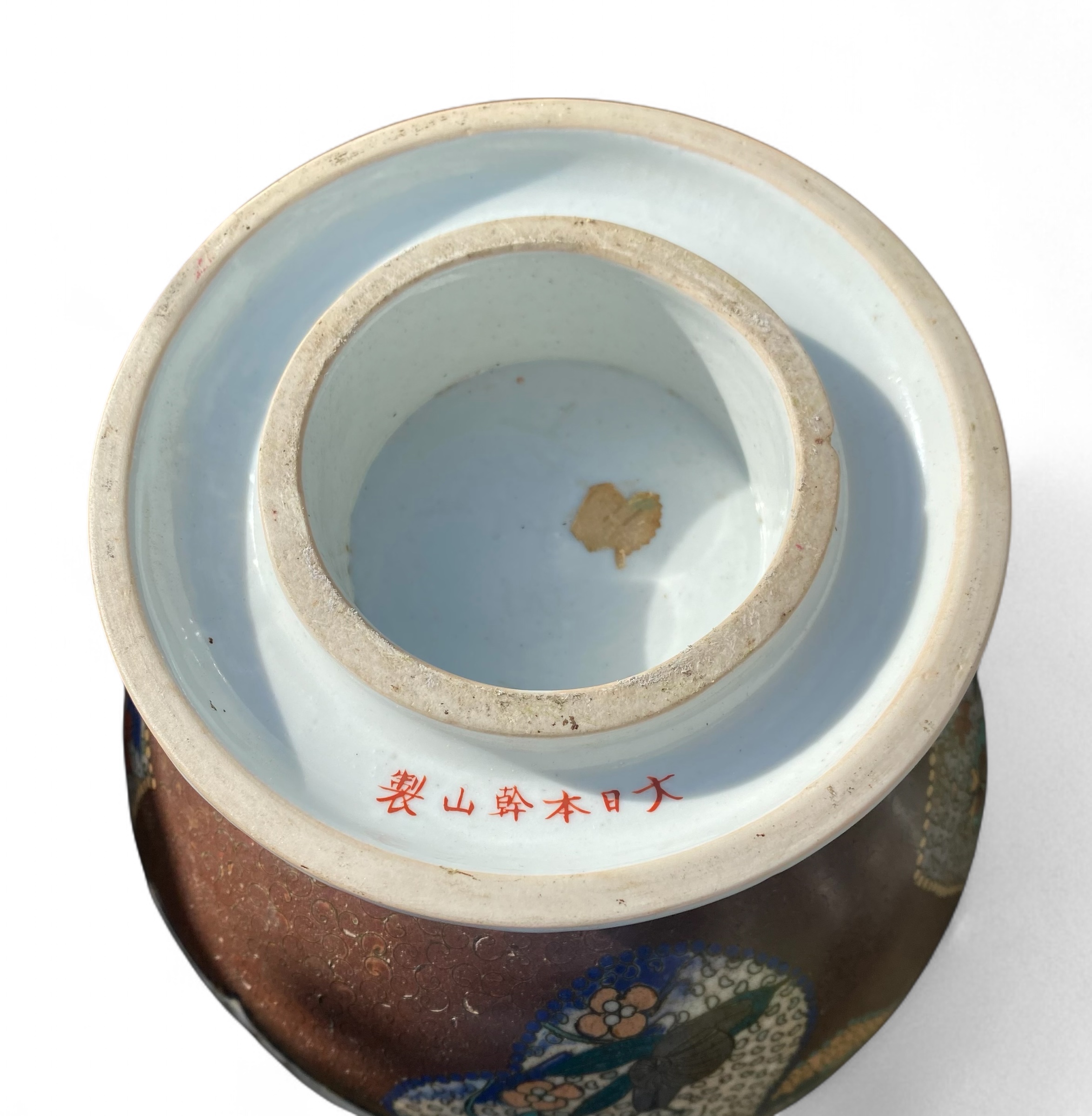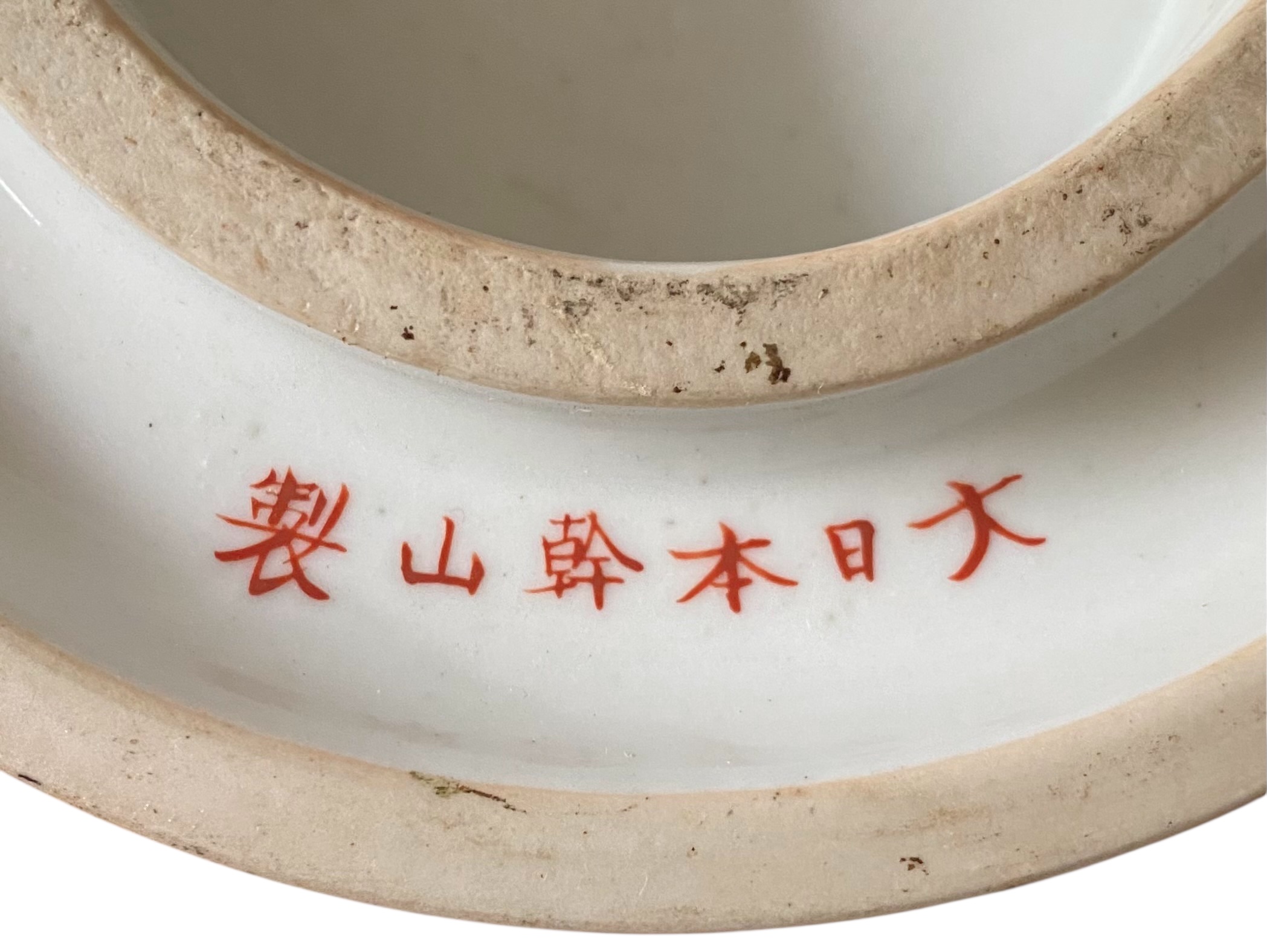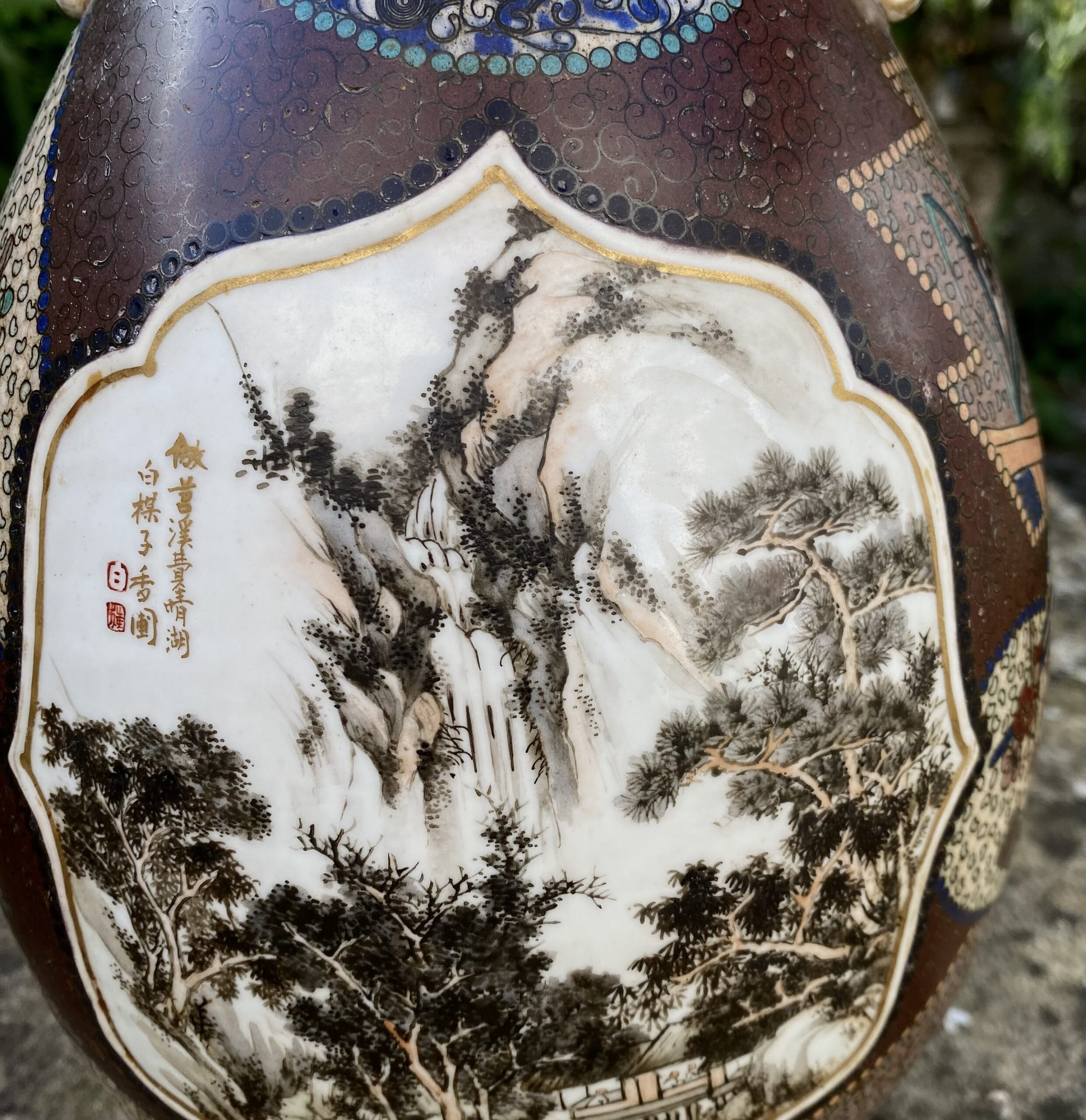Kanzan Denshichi totai cloisonné vase, Japan, c. 1880, Meiji Period.
£1,950.00
SOLD
Kanzan Denshichi (1821-1890) totai porcelain vase, Japan, c. 1880, Meiji Period. The large vase, with moulded panels, finely hand painted by Nagai Koho(1839-1911), in the manner of the Chinese painter Fei Qinghu with a mountainous river landscape, within a shaped panel. The reverse painted with an image of Hachiman.
All on a cloisonné style ground, in brown enamel, and with shaped panels, containing landscapes, birds in flight, flowering plants, butterflies, and wild fowl, worked in metal wires.
The baluster shaped vase, applied with twin scroll handles, heightened in gilt, and set upon a a circular foot, enamelled with continuous stylised floral motif.
Signed 大日本幹山製 “Dai Nihon Kanzan sei” (Manufactured by Kanzan, Great Japan), in iron red enamel.
The mountainous landscape inscribed Taikei Hi Seiko ni naratte, Hakubaishi Koho”. [Painted by Koho (Nagai Koho; 1839-1911), in the manner of the Chinese painter Fei Qinghu.
Height – 46 cm, 18”.
Width – 19 cm, 7 1/2”.
Condition – Excellent. No damage. No restoration.
In 1775, Fei Qinghu, he sailed to Japan, where he mentored Japanese painters, including Yamakawa Bokko and Izuwara Mayoku. He was a major influence on the development of Nanga (Southern School painting) in late Edo-period Japan. He is recognized alongside Jiang Dalai, Yi Fujiu, and Zhang Qiugu as one of the “Four Great Masters Who Travelled to Japan.”

